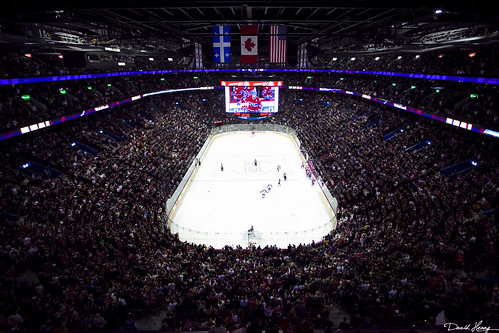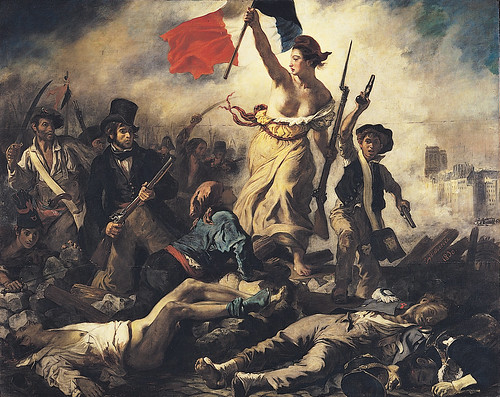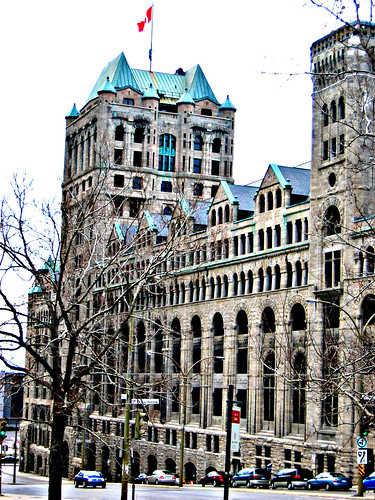The Berlin Wall fell when East German authorities announced the opening of its borders to everyone, November 9, 1989. Many historical scholars, however, would point out the inherent oversimplification that such a statement presents. While the citizens of the former DDR were finally liberated from the concrete cage that defined the communist regime, it was but a consequence of political changes already occurring in Hungary and Czechoslovakia; political changes due to a wane in the Cold War; a conflict brought to surface in the ashes of the Old World Order as a result of the Second World War; a military aggression finding its origins in the end of imperialism, the rise of nationalism and the propagation of the nation-state.
200 years of human history abridged into one sentence.
If only it were so simple; understanding our past is not only an interesting and complex art, but also a powerful tool in preventing the repetition of the mistakes brought upon our society.
For example, Windsor Station: With all the recent talk about its re-integration into the regional transit network, I, along with many others, have been asking, “What allowed for its detachment in the first place? Of all the locations in Montréal, why was the Bell Centre thrown together at this location? ”
Perhaps planners would counter, “Who knew in the early 90s that Windsor Station would play an integral role in the development of transit in the Montréal region?”
Perhaps city leaders would protest, “Who knew that Windsor Station would come to be owned by the Ontario Teachers’ Pension Plan?”
Could this all have been predicted?
Let’s retrace our steps in an attempt to discover where the city went wrong.

The current status of the Windsor Station-Lucien L’Allier complex:
Lucien L’Allier, current terminus for the second busiest line on the AMT network (Montréal-Dorion/Rigaud)
Future plans:
Possible arrival of a Montréal-Aéroport Trudeau rail shuttle and relocation of Amtrak’s Montreal-NYC train service
Increased need for a new bus terminal for South Shore bond transit
Transit hub for Montréal’s planned new tramway network
CP closes the sale of the Windsor Station office building and courtyard, the Windsor Tower and an interest in the Bell Centre parking garage, to Cadillac Fairview Corp. for $86-million. CP retains its role as a principal tenant at the station as part of a long-term lease.
Sale of Windsor Station to Cadillac Fairview gets federal approval. The federal cabinet order says Canadian Pacific must provide proof to Parks Canada that Cadillac Fairview will respect the historic character of the station.
The Molson family has agreed in principle to purchase the Montréal Canadiens and Bell Centre from George Gillett.
Well warranted concern is sparked by the possible sale of Windsor Station. Although currently protected under the federal Railway Heritage Stations Protection Act, the moment it’s released as a CP Railway property it’s no longer protected by the federal government.
CP announces the sale of historic Windsor Station.
Considered an economic success, the Bell Centre currently ranks fourth in the world for ticket receipts.
The Montréal commuter rail network has been steadily expanded during the last 10 years and now consists of five lines and 49 stations. Traffic has increased from 6 million trips in 1996 to more than 15 million journeys a year; representing the fastest growing segment of the transit market in the region.
Bell Canada (owned by BCE) in a deal with Molson will pay 100 million Canadian dollars over 20 years to the Montréal Canadiens hockey club and receive naming rights for the team’s Molson Centre arena.
Record ridership levels and a call for more services could result in C$3.4 billion worth of improvements to regional and urban rail over the next decade.
Political uncertainty seems to be the predominant factor to driving down the Montréal economy.
The $230-million Molson Centre, located in downtown Montréal, opened last week to great fanfare.
After spending 115 years in Montréal, CP Rail goes west, moving its headquarters to Calgary, Alberta. Although political overtones colour the announcement, solid business reasons ultimately dictated the final decision to pursue such a relocation.
For many, trains currently find their place in the memories of yesteryear.
Brian Mulroney is present at the groundbreaking for the new $180-million Montréal Forum, describing it as his last official function as Prime Minister of Canada.
Plans are revealed to “replace the Montréal Forum with a $175 million facility as part of a $450 million development project that will be self-financing and in total conformity with the city’s master plan for the Ville-Marie district.
Molson Corp., owners of the Canadiens and the Forum, has joined forces with Canadian Pacific (CP) railroad for a completely private undertaking that will be built with no public money and on private land owned by CP, thus requiring minimal involvement with government.
Molson, however, has refused to concede one point that has been pressed – raising the building to permit the rail head to exist under the new Forum. At present there is a 300-foot walk between the end of the tracks and the station.”
Montréal Canadiens team president Ronald Corey threatens to substantially increase ticket prices unless the city allows the NHL club to build a new arena.
CP Rail proposes a public/private partnership that would expand the city’s two commuter rail routes to ten or more by the year 2000.
Daniel Johnson, Québec Treasurer, announces that the Montréal region – Quebec’s economic engine – is in a state of economic free fall. Assistance is desperately needed.

Now, one must be careful not to use history as the basis for causality between two events. Nationalism in the 18th century is not responsible for the construction of the Berlin Wall. Likewise, Montréal’s economic recession of the late 20th century is not responsible for the dismantling of important transportation infrastructure.
No: A look at history exposes the cairns marking the moments when someone should have intervened and did not. It shows us that the seemingly insignificant decisions taken by our leaders today can have a considerable effect on human development tomorrow.
No: The Windsor Station example of urban historical backgrounding does is raises a question: What are we choosing to do now that people 10, 20 or 50 years ahead will shake their heads at in the same way?


8 comments
If $520 million is the budget being thrown around for the new station south of St. Antoine, then why not use the money to build another arena, and retrofit the Bell Centre to accommodate trains? It’s somewhat easy to see why the Bell Centre was built in the first place, but it’s location is a major stinker in retrospect. You’d think a retrofit + new arena could be worked out, for the benefit of Hockey Fans and commuters and travelers alike. I’m sure the construction industry would welcome two projects instead of just one!
“Molson, however, has refused to concede one point that has been pressed – raising the building to permit the rail head to exist under the new Forum. At present there is a 300-foot walk between the end of the tracks and the station.”
And there it it.
Windsor Station was still being used and needed at the time. The Molson Centre should have been built on the land south of Windsor, on Peel. Simple as that. This could have spurred development on the southern edge of the CBD earlier.
The design of the Molson Centre and its effect on the cityscape is worse than that of the Ville Marie expressway: it’s hulk-like, south facade is not only ugly but also treats St Antoine like a back alley.
I’m interested in the 9 Feb 1994 event: “For many, trains currently find their place in the memories of yesteryear.”
Is that from the Norman Rockwell Book of History?
Words cannot express how much irony and stupidity has gone into the development of that site. Look at Viger station, same kind of deal. Turning a masterwork into a freakshow pastiche. And for what, so a few years later the city can decide it would be a great site for a train station?
would Emile Thomas please contact me at the above e-mail. Thanks Michael Fish
Random but possibly interesting…. Cadillac Fairview also owns one of Vancouver’s heritage train stations (now a transit station + office blg).
let’s not pretend that no one thought this was a dumb idea at the time. There was plenty of protest to building over the rail connection to one of North America’s most beautiful train stations (how could there not be?). But when Kind Canadien decides to build a stadium without taxpayer help when no one else is building, reason fades.
I curse the Canadiens every time I have to walk that extra 1/2 Km from Lucien-Lallier to Windsor through the Bell Centre on my way to central Montreal! .5Km x twice a day x 5days a week x 50 weeks = 250 km of unnecessary walking every year.